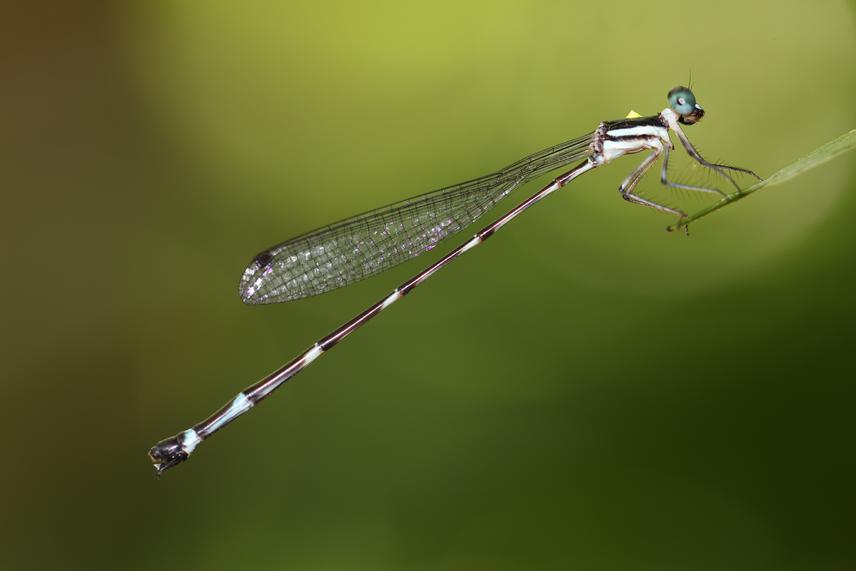Puji Lestari
This project focuses on the conservation of Drepanosticta sundana, a damselfly species endemic to Java and currently categorised as Data Deficient (DD) on the IUCN Red List. Found in cool, shaded forest streams with clean, fast-flowing water, this species is highly sensitive to environmental disturbances, including water pollution, deforestation, and tourism-related activities. In the Menoreh Hills, increasing tourism and agroforestry practices pose significant threats to its survival.

Female Drepanosticta sundana being marked with yellow oil-based paint to assist in estimating population size. © Alfian Surya Fathon.i
To support conservation efforts, the project will begin by collecting baseline data on the population size, distribution, behaviour, and habitat preferences of D. sundana using the Capture-Mark-Release-Recapture (CMRR) method across multiple sampling plots. Additional data on water quality, vegetation cover, and environmental conditions will help identify critical habitat features necessary for the species' survival. These findings will inform the development of a science-based conservation strategy.
Interestingly, D. sundana shares its habitat with malaria vector mosquitoes such as Anopheles balabacensis and A. maculatus, offering a unique opportunity to examine its potential role in regulating vector populations through predator-prey interactions. As such, conserving this damselfly may also contribute to ecosystem health and disease regulation.
Beyond research, the project emphasises community engagement and multi-stakeholder collaboration. Local communities, government agencies, NGOs, and researchers will be involved in identifying key threats and designing practical conservation actions—such as promoting sustainable agriculture, managing tourism impacts, and establishing habitat protection zones. Educational outreach will raise awareness of the species’ ecological role and foster local stewardship.
By combining ecological research, conservation planning, and stakeholder involvement, this project aims to ensure the long-term protection of D. sundana and its habitat—contributing not only to the survival of a rare endemic insect but also to broader goals of forest and freshwater conservation in the Menoreh Hills.